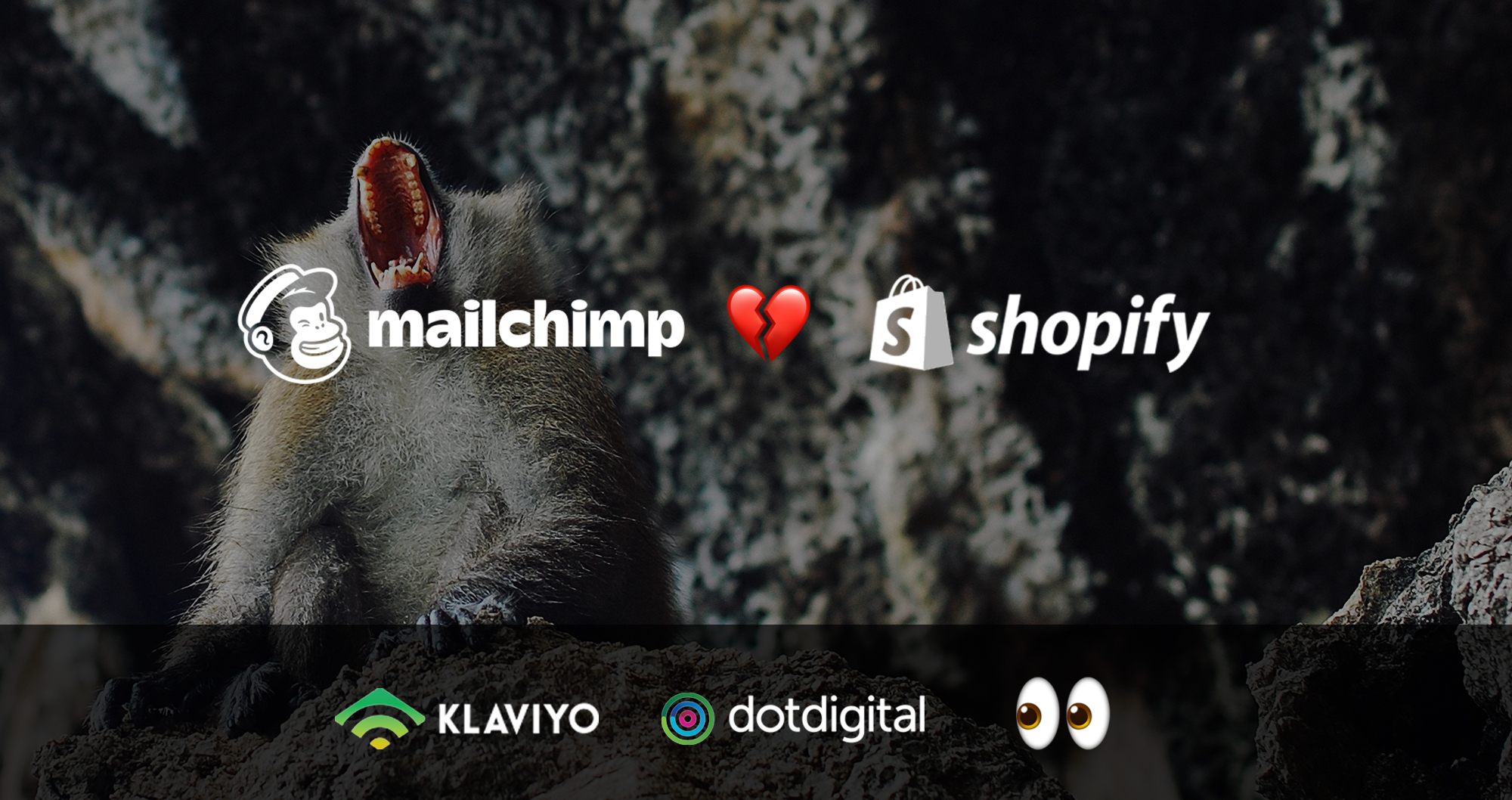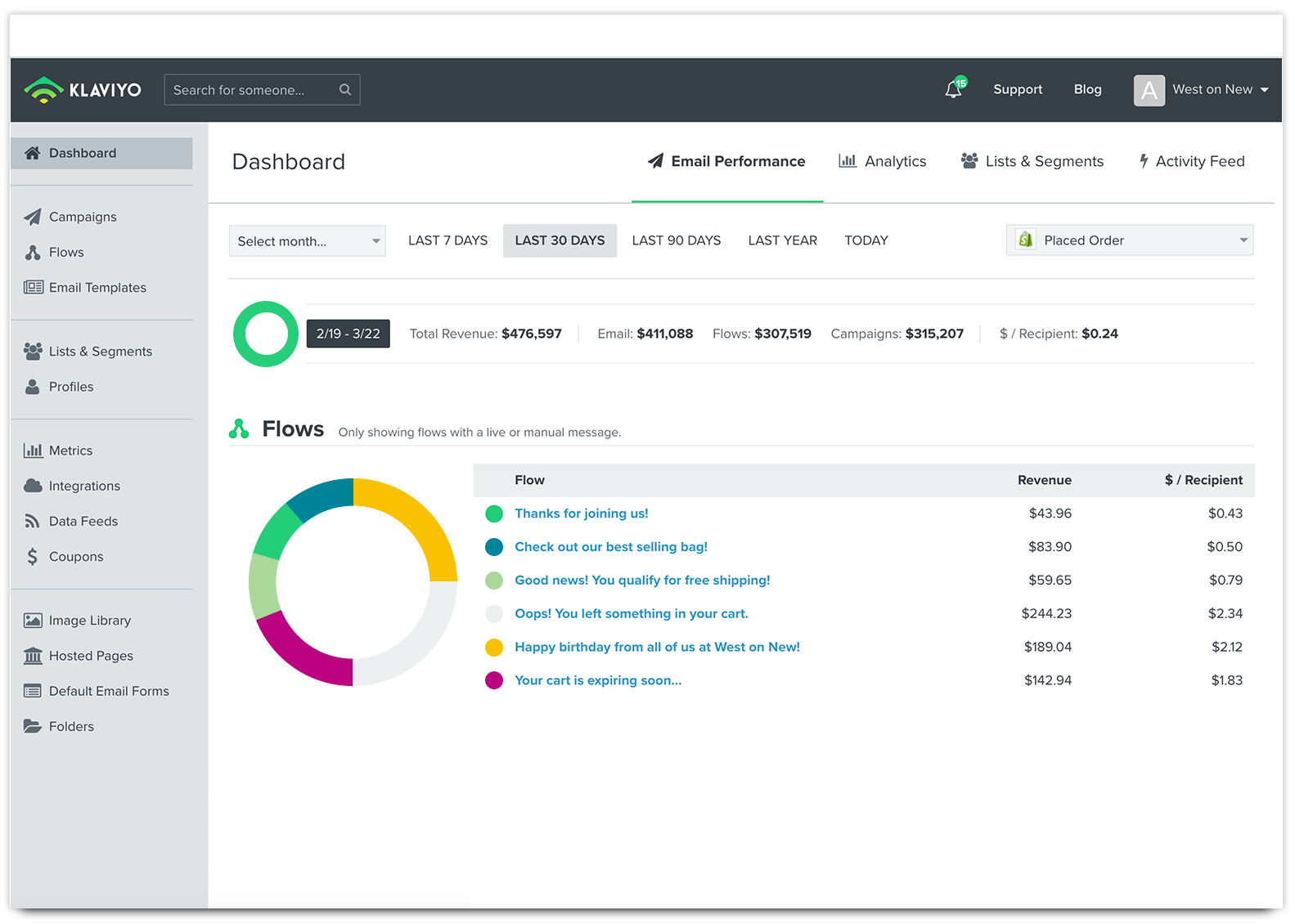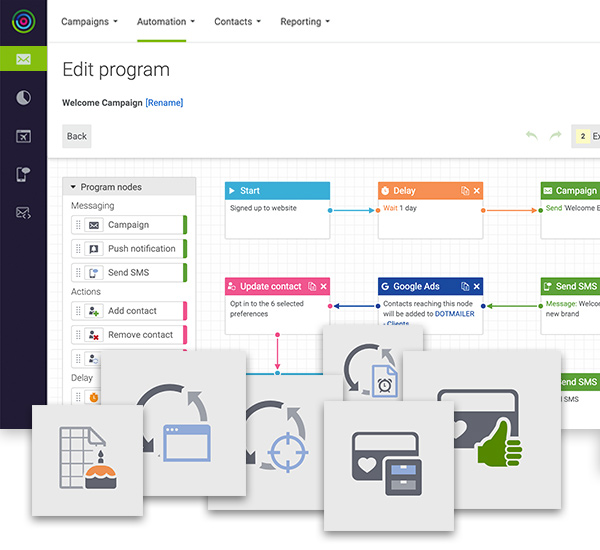MailChimp for Shopify Integration Removed – Workaround or Growth Opportunity?
It’s official – MailChimp and Shopify are parting ways. As an ecommerce manager, you may be wondering how this will affect your business. Here you can get the lowdown on this very public breakup, along with Swanky’s recommendations for next steps.
Written By
Hannah Smiddy

Following the recent news that the MailChimp app is no longer available in the Shopify app store, you may be wondering how this is going to impact your business.
What are your options, both as an existing MailChimp user, or as a Shopify merchant looking into email tools for the first time?
The good news is that there are some powerful alternatives when it comes to email marketing tools.
Alternatives that use some of the most advanced ecommerce technology out there, and are likely to open up your brand to a whole host of exciting growth opportunities!
Read on to get the lowdown on Shopify and Mailchimp’s official breakup statements, before finding out what Swanky recommend moving forwards.
The Announcements – What You Need To Know

Effective as of 21st March 2019, the MailChimp for Shopify integration has been removed for new users from the Shopify marketplace. The integration is still in place for merchants who are already using it, although functionality will cease on 12th May 2019.
Both platforms have released statements explaining their reasoning behind this decision, each citing concerns over customer data and privacy.
Shopify’s Statement
In their official statement, Shopify publicised their concerns over the marketing automation app and its attitude towards customer privacy.
“Shopify has had growing concerns about MailChimp’s app because of the poor merchant experience and their refusal to respect their Partner Program Agreement.”
Shopify went on to add: “Specifically, MailChimp refuses to synchronise customer information captured on merchants’ online stores and email opt-out preferences. As a result, our merchants, other apps, and partner ecosystem can’t reliably serve their customers or comply with privacy legislation.”
MailChimp’s Statement
Unsurprisingly, MailChimp’s official statement tells a slightly different story.
“Yesterday, we asked Shopify to remove the MailChimp for Shopify integration from their marketplace. We made this decision because Shopify released updated terms that would negatively impact our business and put our users at risk.”
MailChimp went on to explain that they “refused to agree to terms that jeopardise our users’ privacy and require us to hand over customer data acquired outside of Shopify.” They argue that the data in question is not theirs to share.
What Are My Options?
We’ve heard what MailChimp and Shopify both have to say. Undoubtedly, you’ll have some burning questions about where this leaves you, either as an existing MailChimp user or as a merchant looking at email marketing for your online retail venture.
For you as an ecommerce manager, us Shopify Experts see two possible solutions:
- Option 1: Keep using MailChimp through workarounds
- Option 2: Switch to a MailChimp alternative – Swanky’s recommendation!
Option 1: Keep Using MailChimp Through Workarounds
Existing connected MailChimp users can use the integration until 12th May, when the data sharing provisions of Shopify’s new terms take effect.
After this date, there are a few workarounds you can employ to connect Shopify and MailChimp.
However, given the somewhat sour breakup between Shopify and MailChimp, it’s worth taking sustainability into consideration by thinking about how long these sorts of workarounds will be allowed by either Shopify or MailChimp.
Third-Party Integrations
You can choose from a number of third-party integrations to connect MailChimp to Shopify. These workaround options include Zapier, Automate.io and ShopSync. They support many of MailChimp’s ecommerce tools, such as syncing store data and triggering automations.
Traditional Data Import
Another workaround option is to manually add customers to your email list via a traditional data import in MailChimp.
As well as the manual effort involved with a data import, there are several other downsides with this method to consider. For instance, without the direct integration with Shopify, Mailchimp would be lacking some crucial ecommerce email features. These include revenue tracking, product feeds to allow for abandoned cart and browse abandonment email flows, and the ability to embed products in email templates (thanks to the lack of product feed).
Install MailChimp Site Code
Finally, you could consider embedding custom MailChimp code snippets on your store. This allows you to use certain features like pop-up forms and retargeting ads, but doesn’t support ecommerce features like product recommendations and reports.
For a more detailed review of these workarounds, including a guide to connecting third-party integrations, please visit the MailChimp Knowledge Base.
Option 2: Switch to a MailChimp Alternative
For ambitious, growth-focused brands looking for an alternative to MailChimp, Swanky recommend migrating to a different email automation platform altogether, rather than relying on one of the workarounds suggested by MailChimp.
In the wake of Shopify’s breakup with MailChimp, you’ve probably already been inundated with pitches from other platforms, all vying for your attention and your business. How do you know which one is right for your business though?
We’ve picked out two platforms that we recommend, depending on your business level. Both of these offer more advanced flexibility than MailChimp, most notably customer segmentation and logic flows. Let’s find out more about these alternatives.
Klaviyo
Free solution available

Over 100,000 Shopify merchants have integrated their stores with Klaviyo, including huge ecommerce names such as Chubbies and Taylor Stitch. This powerful marketing automation tool has been built for growing real, quality customer relationships. Klaviyo integrates with both Shopify and Shopify Plus stores, making it the perfect tool for scaling brands.
Amongst other features, Klaviyo allows merchants to segment their audience and send targeted email campaigns, increase sales with pre-built win-back emails, and quickly create signup forms to collect emails. Users can also deploy automated flows such as abandoned cart, happy birthday and back in stock flows. These flows are simple – yet powerful – ways to capitalise on purchase opportunities, increase customer engagement and strengthen customer loyalty at scale.
We caught up with Swanky’s very own Head of Operations, Ben Homer, to get his thoughts on Klaviyo’s functionality:
“Klaviyo is a fantastic tool that allows a wide range of functionality at entry level pricing and then scales with your business. It’s a great first step for ambitious merchants with high growth plans.”

Klaviyo dashboard
Migrating from MailChimp to Klaviyo
Over 3,700 MailChimp users made the move over to Klaviyo in 2018. These merchants saw an average increase of over 45% in total store revenue. The single-click integration between Shopify and Klaviyo pulls all the data you need to personalise your marketing, allowing quick and effortless migration from MailChimp.
For more details on Klaviyo and its powerful functionality, check out their website.
You can get in touch with Swanky’s friendly team of ecommerce experts for more information. We can install, configure, style and then optimise Klaviyo’s features on your Shopify site, so that they effortlessly integrate with your existing store and speak to your target audience. We’ll enable you to get the most out of your new tool, with your unique business goals in mind. Once the integration is up and running, we’ll configure your analytics to make sure you’re getting the best return on investment.
Dotdigital Engagement Cloud
If your revenue exceeds £2m annually

The Dotdigital Engagement Cloud (formally known as Dotmailer) empowers Shopify and Shopify Plus merchants of every vertical to increase their online growth through intelligent, data-driven communications. This powerful customer engagement platform is perfect for high-volume Shopify Plus enterprises looking for quick wins and strong growth.
Omnichannel automation lies at the core of The Engagement Cloud. Merchants can build insightful customer profiles to deliver unique, tailored messages through customers’ favourite channels, wherever they are, on whichever device.
What does Swanky’s Ben think about Dotdigital’s offering?
“The Dotdigital Engagement Cloud sits on its own in terms of functionality, ease of use and its powerful ability to personalise communication across multiple channels. Far more than just an email marketing platform, it allows merchants to capitalise on SMS engagement and even physical marketing collateral such as postcards. Its ability to tap into so many communication channels really sets it apart as an enterprise-level engagement solution.”

Example of Dotdigital’s B2C automation functionality
Migrating from MailChimp to Dotdigital
As official Dotdigital partners, we can help assess whether The Engagement Cloud is a good fit for your business, before putting you in touch with all the right people over at Dotdigital. Feel free to contact the Swanky team for a chat.
You can also check out the Dotdigital website for more information on The Engagement Cloud and its benefits.
What next and where do I start?
If you’re a MailChimp customer affected by the Shopify integration update, fear not, for there are some super-swanky alternatives out there to embrace.
Get in touch today to speak to one of our Shopify experts about your next steps. Swanky has worked with countless ecommerce stores to unlock their potential and accelerate their growth. We can assess your unique business needs and help you work out which solution fits your brand best.
And remember, existing users can only use the MailChimp for Shopify integration until 12th May 2019, so you need to act fast.

